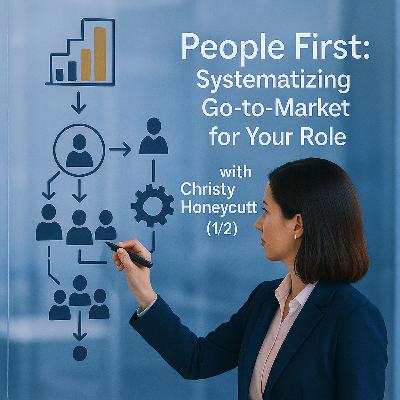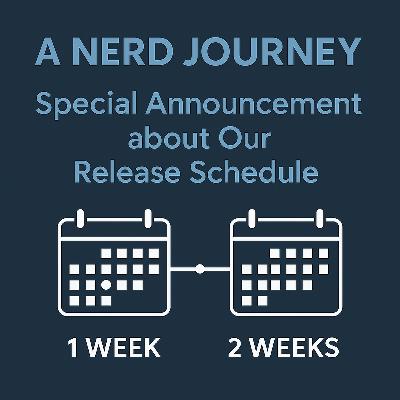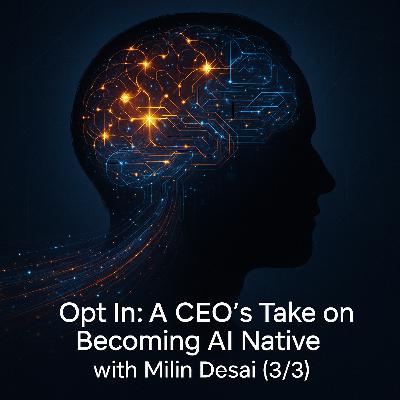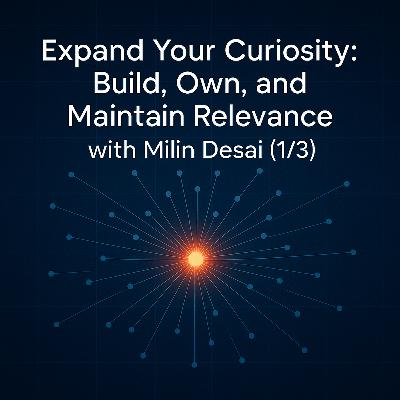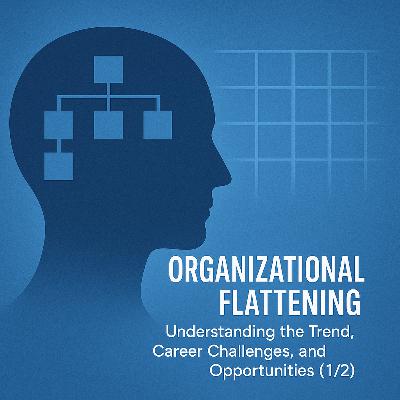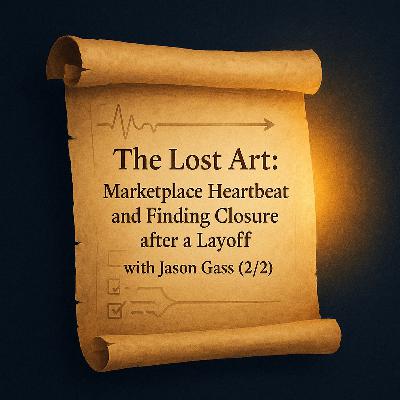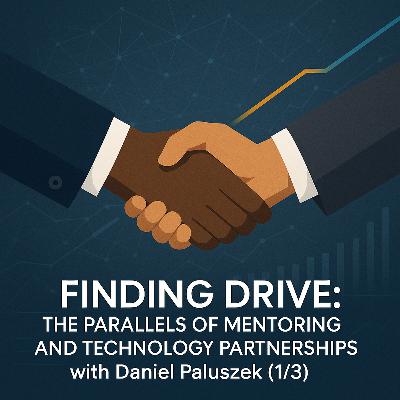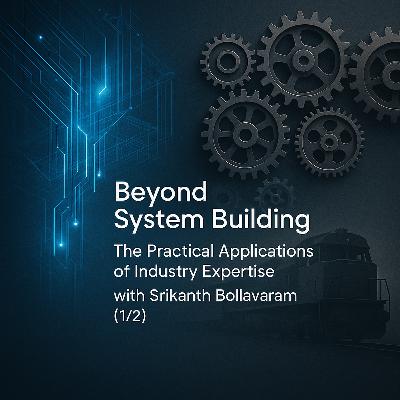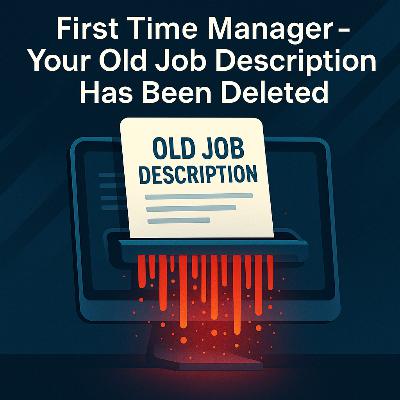People First: Systematizing Go-to-Market for Your Role with Christy Honeycutt (1/2)
Description
Go-to-market strategy is something we often associate with a company or its products / services, but what if we could apply go-to-market to our job role?
Christy Honeycutt, a talent acquisition veteran and our guest this week in episode 352, has used this mindset as a personal differentiator starting with her first job in the banking industry. We’ll follow Christy as she describes early experience as a people manager, learn why she developed a people first mentality, and recount the events that kickstarted her career in recruitment.
This story helps us understand what is required to systematize the work we do and how difficult it can be for things that seem easy. Christy will also educate you on the importance of developing AI competence and the impact of recruitment process outsourcing on job candidate experience.
Original Recording Date: 09-30-2025
Topics – Meet Christy Honeycutt, A Go-to-Market Perspective, Beginnings in the Banking Industry, Learning to Systematize and Duplicate Yourself, A People First Approach, Getting into Recruitment
2:10 – Meet Christy Honeycutt
- Christy Honeycutt has 20 years of talent acquisition experience, go-to-market experience, and some marketing experience sprinkled throughout.
- Christy is also the host of two different podcasts:
- On Inside the C-Suite, Christy interviews executive leaders to gain insight from life in these roles.
- StrategicShift is focused on the future of work, innovation, and AI.
3:17 – A Go-to-Market Perspective
- How would Christy define talent acquisition and recruitment and the differences between them?
- Recruitment should be thought about as more active. There is a job open with specific requirements which need to be filled based on time constraints.
- Talent acquisition is more strategic according to Christy. This would include understanding why a role is vacant, the succession plans, cultural initiatives, and workforce planning. Christy refers to this as “engaging passive pipelines for long-term goals.”
- Personnel in talent acquisition and recruitment are usually in those roles because they want to help people, but these roles may look slightly different across companies of various sizes and in different industries.
- How would Christy define go-to-market? We hear this term quite often but are not confident that everyone truly understands what this means.
- For context, Christy talks about looking at this with a lens across many different departments / internal organizations – marketing, recruitment, and even sales.
- “Go-to-market is understanding what is the product and who is the end user…. Am I filling a job? Then I’m going to market for that candidate that fits that job. Am I working for a tech company (which I most recently did)? Then, yes, I need to understand what is our product, who is the end user, who is the buyer…and how can I get this to market for them…to see, to use to buy, and to be delighted in? The go-to-market is really kind of a Frankenstein effect in my opinion. It’s really understanding the value and how it translates and then how you can connect the dots…. Go-to-market for me has just kind of been at my core since I was a kid.” – Christy Honeycutt
- For recruitment, the go-to-market is usually set based on an organization’s vision, mission, values, and culture.
- Christy uses the example of negotiating with her father (a former Marine) to get what she wanted when she was younger to illustrate that go-to-market can mean understanding how to sell.
7:01 – Beginnings in the Banking Industry
- Christy was a cheerleader in high school and got a fully paid scholarship to college, but at age 17, she was diagnosed with cancer.
- As a result of the diagnosis, she was not able to attend college. Christy always wanted to be a mom and did not want to ruin her chance to have children.
- Christy married her college sweetheart and became a stay-at-home mom of 2 children.
- She is now heathy, happy, and thankful she was able to have children.
- Christy’s father owned a nonprofit, and even while she was a stay-at-home mom, Christy was involved in marketing for nonprofits as a result.
- Christy also was part of the boards of her children’s schools, did volunteer work, and even taught pre-school.
- After moving to a new state, Christy needed to get a job to support her children. After applying at a bank, she landed a manager job.
- Within 6 months, the bank branch where she worked was the highest producing in the state of Texas.
- Christy came up with marketing initiatives to get customers to visit the bank. She gives the example of a yearly Halloween contest.
- At one point, the bank was robbed, and Christy learned to lead in stressful situations through this experience. She also learned that she has a photographic memory.
- Christy tells us her career really began in banking and then transitioned into marketing. Listen to the story about one of her clients who was a mortgage broker.
- Christy had 2 boys in various sports and was wearing herself out between work at the bank and home life.
- This mortgage broker sent an e-mail to help Christy get interviews for a role at a different bank.
- Christy tells the story of interviewing in the mortgage division of another bank (Prime Lending) close to Halloween. She was dressed as Lucille Ball for an event at her employer and ended up going to the interview in costume. The people who interviewed Christy loved it, and she was offered the job on the spot.
11:40 – Learning to Systematize and Duplicate Yourself
- “But the really interesting thing that happened is they said, ‘we want you to hire 3 of you…. What you’re doing is working, so what we’d like you to do is go have a think about how you can multiply that into other branches….’ Can you imagine sitting down and going, ‘what is it that I did today and how did I do it?’ …And, just really creating a job description, a profile, how they’re going to be successful…and then find the people and train the people? So that was my very first…experience with recruitment.” – Christy Honeycutt
- After removing the shock of being told to multiply herself, Christy began a process that she would repeat over and over in her career – thinking outside the box to create something special that she could automate or systematize.
- At that first bank, Christy managed people but had no prior training as a manager. How did she figure out how to manage people, and then how did that translate to the role in which she was asked to create job descriptions and multiply herself?
- We’ve heard from some guests that most first-time managers do not get training. Christy echoes this sentiment.
- Large banks will train you on laws and procedures, but Christy tells us she had to train herself on the people side. Mainly, she needed to learn how to manage the people, their schedules, and learn how to encourage them. Despite being the boss, Christy was still friends with the people who worked there.
- In being asked to multiply herself, Christy had to systematize the job she was already doing. She tells us it was a daunting task.
- “When you’re really good at things, what I’ve found is they seem natural to you, and they are not that hard.” – Christy Honeycutt
- When asked to duplicate herself, Christy downplayed her contributions a little bit. She advises all of us to step back and really think about the work we have done because we might not immediately recognize it and may downplay it in a similar way.
- As humans, we might at first feel like it is bragging to share the factual things we have done.
- Christy had to think about what she did, simplify it, and figure out how to translate that to the people she needed to hire.
- Christy was working for the mortgage division at a bank, and they needed to get more loans. She first sought to understand the sentiment of the bank’s customer base and if they had any needs. Step 1 was hosting a customer appreciation event.
- The customer appreciation event generated direct feedback on the bank’s processes and product offerings.
- Next, Christy sought to understand the bank’s target market, which was real estate agents. She thought about how to get real estate agents to use this specific mortgage broker. New real estate agents need help with marketing, so Christy got certified and began teaching marketing classes to real estate agents. All of the agents would eventually begin using the bank.
- “It’s just kind of understanding what’s in it for someone else…. I just…went step by step by step and built the framework….” – Christy Honeycutt
- The framework Christy mentions above outlined where the opportunities were for the bank (i.e. who might need their services), allowed for dividing up the work across divisions, and provided insight into the key performance indicators (KPIs) for measuring success.
- In many ways, Christy acted as a liaison between the bank, the real estate agents, and end customers.
- When seeking to hire people to do the work, Christy looked for empathetic people who were interested in helping others.
- Another avenue for the bank to increase the number of loans was working with first-time home buyers who might have poor credit. This would help real estate agents who needed hom

